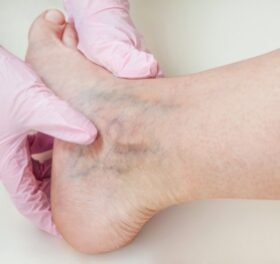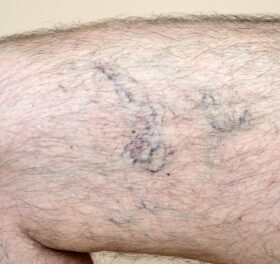Varicose veins are a common condition that affects millions of people worldwide, especially those over the age of 50. Varicose veins can cause discomfort, pain, and even lead to serious health issues if left untreated. At Vein Treatment Clinic, we understand the concerns that come with varicose veins, and we help you understand when you should worry about them.
What are Varicose Veins?
Varicose veins are swollen and twisted veins that are visible under the skin. They usually occur in the legs and feet because standing and walking upright increases the pressure in the veins of the lower body. The blood vessels in your legs contain valves that help prevent the backflow of blood. When these valves weaken or malfunction, the blood can pool in the veins, causing them to stretch and become varicose.
Risk Factors for Varicose Veins
While varicose veins can occur at any age, several factors increase the likelihood of developing them. These factors include:
- Age: As you get older, the valves in your veins weaken, increasing the risk of varicose veins.
- Genetics: If a family member has varicose veins, you are more likely to develop them.
- Gender: Women are more likely to develop varicose veins than men.
- Pregnancy: The increased pressure on the veins in the lower body during pregnancy can cause varicose veins.
- Obesity: Being overweight or obese puts additional pressure on the veins, increasing the risk of varicose veins.
- Sitting or standing for long periods: Sitting or standing for extended periods can cause blood to pool in the veins, increasing the risk of varicose veins.
When to Seek Varicose Vein Treatment?
Varicose veins may cause discomfort or pain, but they are not always a serious health issue. However, there are situations where you should seek treatment for varicose veins, including:
- Pain or Discomfort: If you experience pain, throbbing, or aching in your legs, especially after standing or sitting for long periods, you may have varicose veins. The discomfort may also be accompanied by cramping or a heavy feeling in the legs.
- Swelling or Skin Changes: Varicose veins can cause swelling in the legs, ankles, or feet. Additionally, the skin around the affected area may become discolored, dry, or itchy. In severe cases, varicose veins can cause skin ulcers or sores that are difficult to heal.
- Lifestyle Changes Do Not Help: If you have tried wearing compression stockings or making lifestyle changes to reduce the symptoms of varicose veins, and they persist, you should seek medical attention. In some cases, varicose veins may require medical intervention to improve the symptoms.
Varicose Vein Treatment Options
If you have varicose veins, several treatment options are available. At Vein Treatment Clinic, we offer minimally invasive procedures that can relieve the discomfort and pain associated with varicose veins. Some of the treatment options include:
- Sclerotherapy: Sclerotherapy involves injecting a solution into the varicose vein, causing it to collapse and disappear over time. This procedure is ideal for small and medium-sized varicose veins and takes about 30 minutes.
- Endovenous Laser Ablation: Endovenous laser ablation uses laser energy to close off the affected vein, redirecting blood flow to healthier veins. This procedure takes about 45 minutes and is ideal for larger varicose veins.
- Radiofrequency Ablation: Radiofrequency ablation uses heat energy to close off the varicose vein, redirecting blood flow to healthier veins. This procedure takes about 45 minutes and is ideal for larger varicose veins.
- VenaSeal: VenaSeal is a procedure that uses medical-grade adhesive to close off the varicose vein, allowing blood to flow to healthier veins. This procedure takes about 30 minutes and is minimally invasive.
- ClariVein: ClariVein is a procedure that uses a special catheter to deliver a solution that closes off the varicose vein. This procedure takes about 30 minutes and is minimally invasive.
- Ambulatory Phlebectomy: Ambulatory phlebectomy is a minimally invasive procedure that involves removing the varicose veins through tiny incisions in the skin. This procedure is ideal for larger varicose veins and takes about 45 minutes.
These procedures are performed on an outpatient basis, so you can resume your daily activities immediately after the procedure. At Vein Treatment Clinic, our board-certified vascular surgeons will work with you to determine the best treatment option for your specific needs.
Compression Stockings
In addition to medical procedures, compression stockings can help alleviate the symptoms of varicose veins. Compression stockings apply pressure to the legs, improving blood flow and reducing the symptoms of varicose veins. These stockings are available in different sizes and strengths, and you can purchase them at most drugstores or online.
Preventing Varicose Veins
While some risk factors for varicose veins, such as age and genetics, cannot be prevented, there are steps you can take to reduce your risk of developing varicose veins. Some of these steps include:
- Exercise regularly to improve circulation and strengthen leg muscles.
- Maintain a healthy weight to reduce the pressure on your veins.
- Avoid standing or sitting for long periods.
- Elevate your legs whenever possible to improve blood flow.
- Wear compression stockings to improve blood flow and reduce symptoms.
Varicose veins are a common condition that affects many people. While they may not always be a serious health issue, they can cause discomfort and pain, and in severe cases, lead to skin ulcers or sores. At Vein Treatment Clinic, we offer minimally invasive procedures to relieve the symptoms of varicose veins and improve your quality of life. If you experience any discomfort or pain in your legs or notice any skin changes, seek medical attention. Our board-certified vein doctors will work with you to determine the best treatment option for your specific needs.
At Vein Treatment Clinic, we have state-of-the-art locations across the United States, including New York, New Jersey, Long Island, California, and Washington DC. Our clinics are staffed by board-certified vein doctors who specialize in the diagnosis and treatment of varicose veins. If you are concerned about your varicose veins, schedule a consultation with us today.











